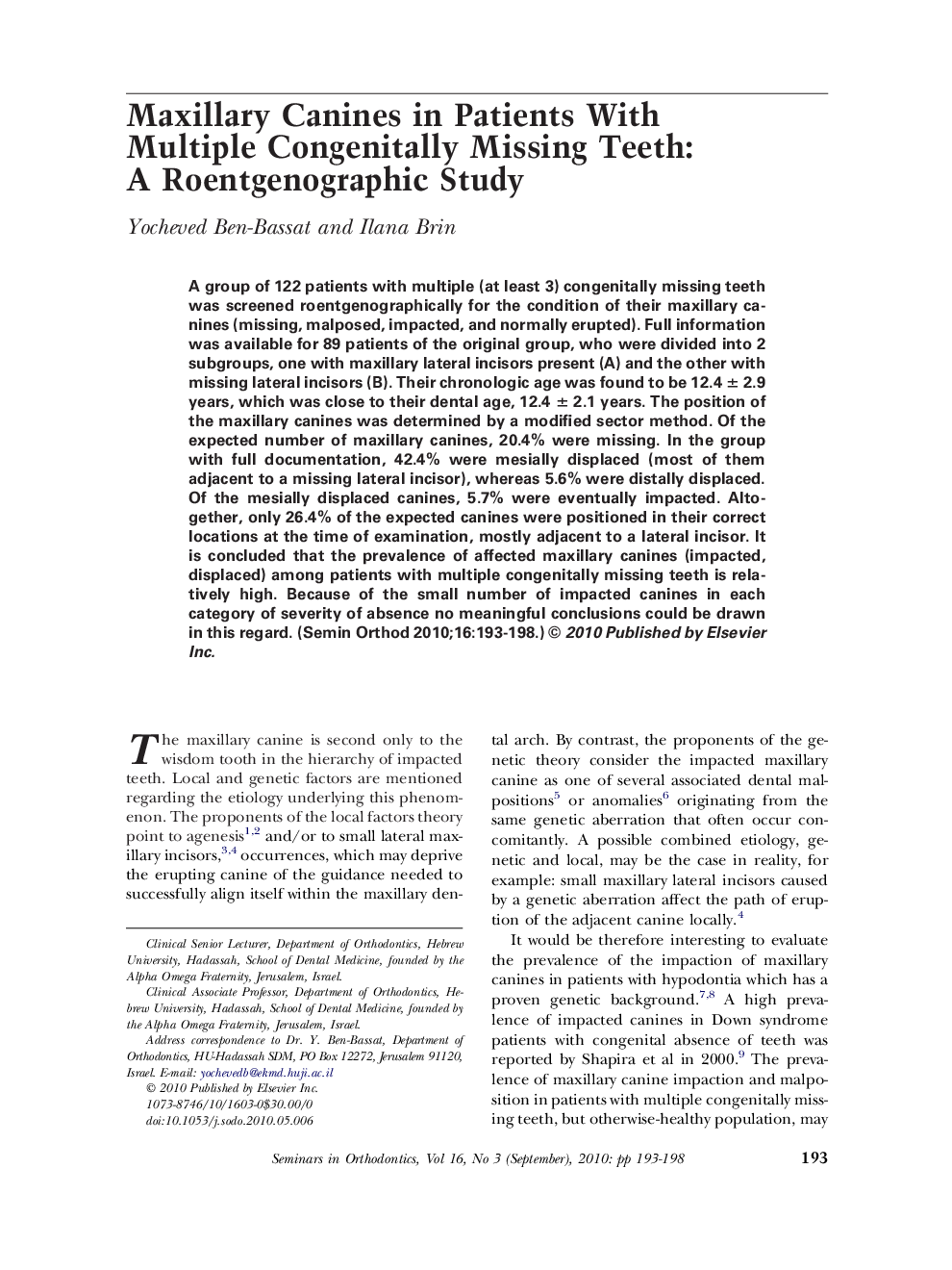| Article ID | Journal | Published Year | Pages | File Type |
|---|---|---|---|---|
| 3175706 | Seminars in Orthodontics | 2010 | 6 Pages |
A group of 122 patients with multiple (at least 3) congenitally missing teeth was screened roentgenographically for the condition of their maxillary canines (missing, malposed, impacted, and normally erupted). Full information was available for 89 patients of the original group, who were divided into 2 subgroups, one with maxillary lateral incisors present (A) and the other with missing lateral incisors (B). Their chronologic age was found to be 12.4 ± 2.9 years, which was close to their dental age, 12.4 ± 2.1 years. The position of the maxillary canines was determined by a modified sector method. Of the expected number of maxillary canines, 20.4% were missing. In the group with full documentation, 42.4% were mesially displaced (most of them adjacent to a missing lateral incisor), whereas 5.6% were distally displaced. Of the mesially displaced canines, 5.7% were eventually impacted. Altogether, only 26.4% of the expected canines were positioned in their correct locations at the time of examination, mostly adjacent to a lateral incisor. It is concluded that the prevalence of affected maxillary canines (impacted, displaced) among patients with multiple congenitally missing teeth is relatively high. Because of the small number of impacted canines in each category of severity of absence no meaningful conclusions could be drawn in this regard.
